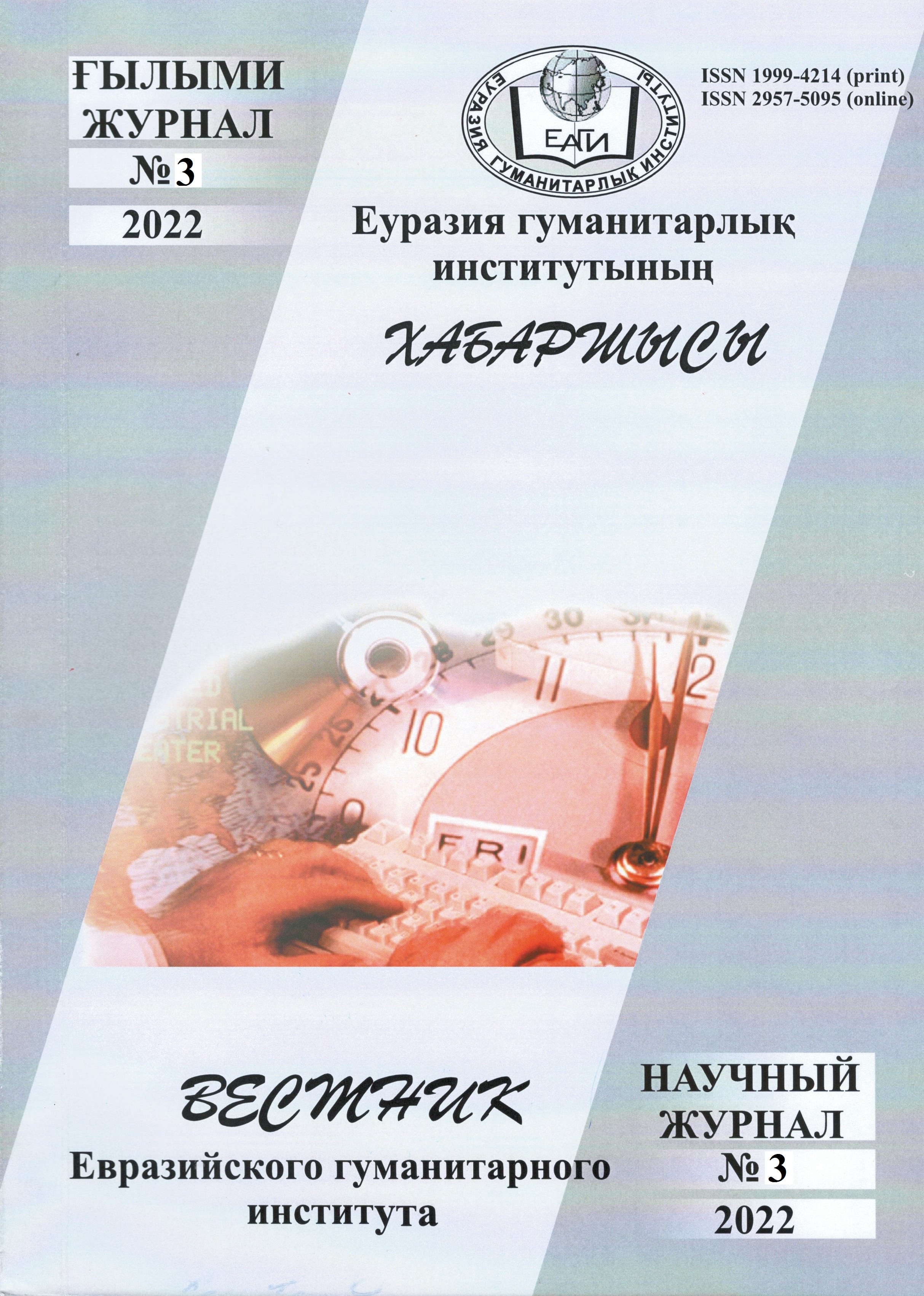ARTISTIC ORIGINALITY OF MODERN KAZAKH PROSE
Keywords:
kazakh prose, reminiscence, historical reminiscence, biographical reminiscence, imageAbstract
The radical changes taking place in modern Kazakh society have contributed to the fact that the spiritual quest of our people has brought the development of literary thought to a new level. In the post-Soviet period, having freed itself from the political restrictions of socialist realism, the Kazakh artistic word did not immediately find its way. This was the reason for the appearance of such an opinion among the literary community that «Kazakh literature was experiencing stagnation, could not follow the rapid pace of development of modernity». However, in all kinds of literature, especially in the epic, where the genre content was delayed, works gradually began to be created that reveal new themes and plots that meet the requirements of the new time.
The article examines the ideological, thematic and artistic originality of modern Kazakh prose based on the work of such writers as T. Shapai, K. Tyumenbai, A. Altay. The authors of the article draw attention to the fact that in the prose works written over the past twenty years, the writers not only used the accumulated creative traditions of national literature, but also reflected the artistic trends of world literature. The artistic embodiment of the national idea in modern Kazakh prose is also comprehensively analyzed by analyzing the symbols «wolf – bori», «world tree – baiterek», «house – shanyrak», «Homeland – tugan zher», etc. At the same time, it is assumed that each writer puts various specific meanings into the meaning of these artistic symbols.
One of the «closed» themes revived during the years of independence is an artistic recreation of the December events that took place in Almaty in 1986. For the first time in modern Kazakh prose, K. Tumenbai wrote his story «Kobyzdyn muny» («The Grief of Kobyz») on this topic, then Askar Altai continued the baton in his story «Kaladagy kutpandar» («City Dogs»). The author, using unique images and features of the artistic method, gives his vision of the period of the December revolt. The story of the writer A. Altai «Kaladagi kutpandar» («City Dogs») is considered by the authors of the article through the literary prism of intertextual analysis with the definition of such an element of the artistic system as reminiscence. The researchers, based on the analysis of the literary text, identify the presence of historical, social, biographical reminiscences and argue their conclusions with examples. The authors of the article establish that the historical and social reminiscences presented in the work in the form of references to specific historical facts that took place in Kazakh society at the end of the twentieth century enhance the artistry of the work and create historical and social prerequisites for the narrative, and biographical reminiscences are fundamental in the work and are associated primarily with specific events that took place in the author's life.
The perception of a new form of folklore thought, characteristic of mystical prose in modern Kazakh prose, will be extremely interesting to every reader. The most pressing problem of this scientific article is the analyzed new images and artistic techniques, in order to reveal the secrets inherent both in the text of the work of art and outside of this text.


